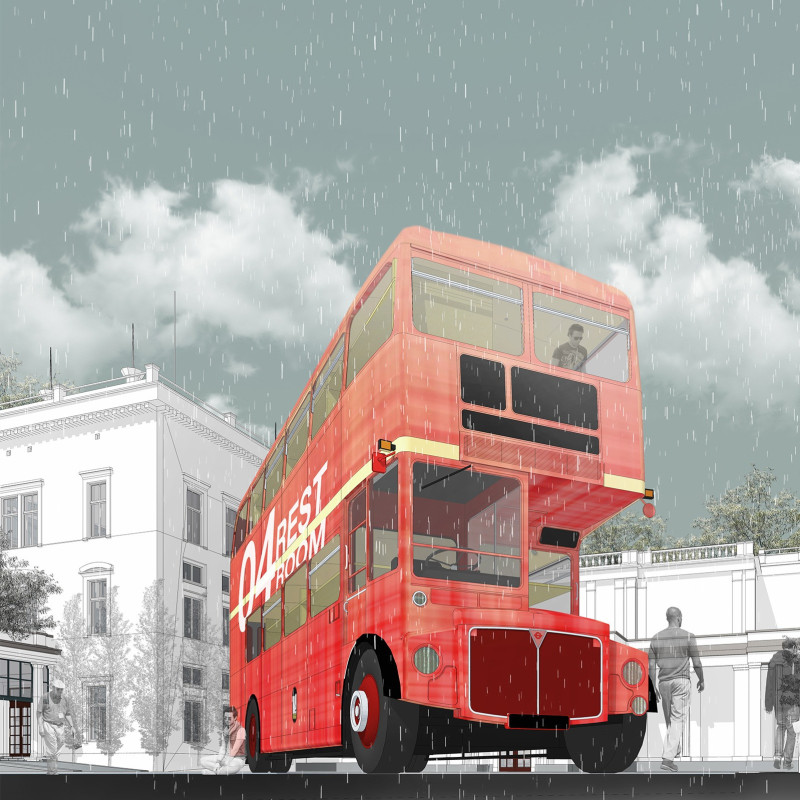5 key facts about this project
The design focuses on finding solutions for homelessness in London by reimagining Routemaster buses as living shelters. Located in a bustling urban environment, the project aims to provide a practical response to the growing need for support among those without stable housing. The concept centers on turning an everyday vehicle into a resourceful space that accommodates essential living needs while fostering a sense of community.
Living Spaces
The interior layout of the Routemaster is modified to include nine beds spread over two levels. This configuration effectively utilizes the limited space, providing safe and comfortable areas for individuals to sleep. Each bed is designed to offer privacy while allowing for efficient use of the bus's structure. The design achieves functionality and maintains the distinctive elements that define the Routemaster.
Kitchen Facilities
A significant aspect of the design is the kitchen area, known as UNIT02. This kitchen enables residents to prepare their own meals, addressing a critical aspect of daily life. By allowing access to cooking facilities, the project empowers inhabitants to maintain their autonomy in food preparation. This aspect is particularly important for those who may struggle with food insecurity.
Hygiene Amenities
The inclusion of hygiene facilities, including toilets and showers, is essential to the project. These spaces are designed to help residents maintain cleanliness and personal care, which is vital for overall well-being. The presence of these amenities supports a dignified living situation, ensuring that individuals have access to necessary sanitation in a comfortable environment.
Community Interaction
The design also features communal areas to encourage interaction among residents. Dining spaces are integrated into the bus layout, allowing people to share meals and engage with each other. This social aspect is crucial, as it helps build connections and combats feelings of isolation that often accompany homelessness. The bus becomes more than just a shelter; it serves as a gathering place where relationships can form.
Every detail in the design works together to create a practical living space that also respects the cultural heritage of the Routemaster. This project highlights the potential of adaptive reuse in addressing urgent social challenges.



























